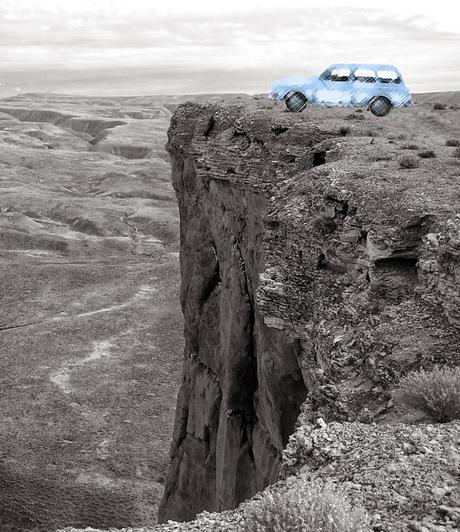 Wyoming has been good to me. For 25 years I made a living traveling to its far corners and obscure non-destinations in search of plants. It rewarded me with spectacular landscapes, fascinating natural history, and surprises. But now in retirement (mostly), I usually go elsewhere – Utah, Nevada, California. This year I resolved to spend more time in my state.
Wyoming has been good to me. For 25 years I made a living traveling to its far corners and obscure non-destinations in search of plants. It rewarded me with spectacular landscapes, fascinating natural history, and surprises. But now in retirement (mostly), I usually go elsewhere – Utah, Nevada, California. This year I resolved to spend more time in my state.Wednesday was to be a gorgeous spring-like day, so on Tuesday I picked a place I’d never visited, did a little research, and left home early the next morning. It would turn out to be a perfect outing. A not-particularly-scenic part of the state revealed itself to be beautiful, fascinating, even magical.That trip was less than two weeks ago yet already it seems like a dream. But then maybe I was dreaming. For you see … I came upon a unicorn!
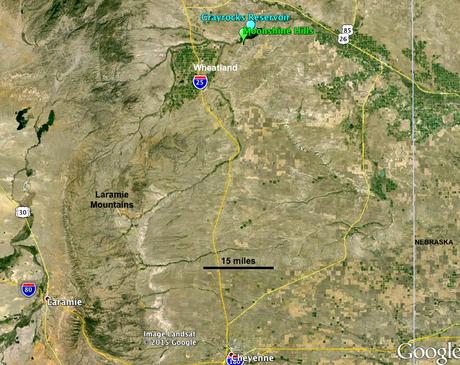
Moonshine Hills and Grayrocks Reservoir are northeast of Wheatland, WY. Google Earth view.
I drove northeast from Laramie to the western edge of the Great Plains – the open rolling grassland country around Wheatland. Destinations were the Moonshine Hills and Grayrocks Reservoir. Few people know of the Moonshine Hills. Ownership is private; access requires permission. Grayrocks Reservoir is more popular, mainly for fishing.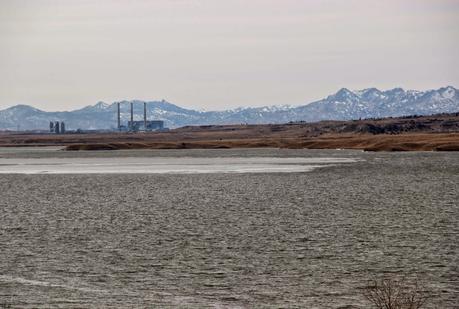
View west from dam overlook: Grayrocks Reservoir, Laramie River Power Plant, Laramie Mountains.
I had two objectives:1. find small outcrops of Precambrian (very old) rocks among Tertiary (fairly young) surface rocks in the Moonshine Hills;
2. find the “gray rocks” of Grayrocks Reservoir.The Precambrian objective was quickly met. I had with me Laura McGrew’s 1953 thesis about the geology of the Grayrocks area. She had clearly indicated two small Precambrian outcrops on the beautiful hand-colored map in the back pocket. Both were visible from the county road.
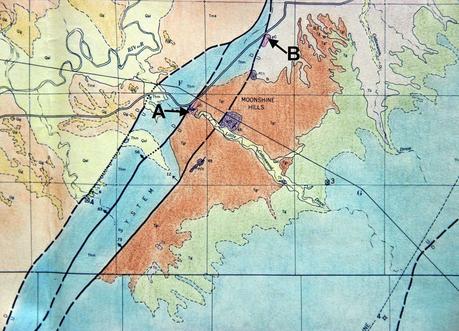
From map by McGrew, 1953. Added letters refer to photos below.
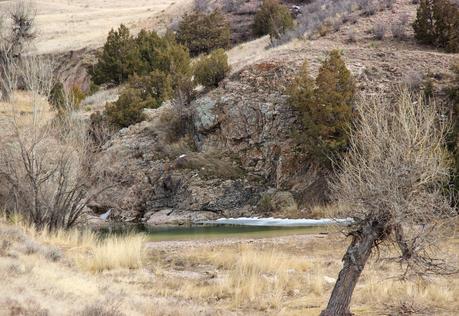
Precambrian outcrop A across creek, looking southeast from pullout.
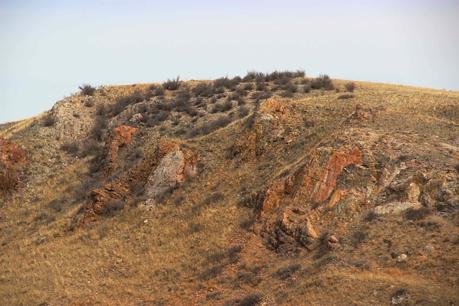
Precambrian outcrop B, looking northeast from road.
These outcrops include schist, gneiss, quartzite and granite. They’re thought to be part of an eroded uplift now mostly buried under younger sedimentary rocks. It probably dates to late Cretaceous-Paleocene time, contemporary with other Laramide features such as the Hartville Hills to the north and the Laramie Mountains to the west (McGrew 1953, Blackstone 1996).In her thesis, McGrew also described gray rocks – part of the Gering Formation of the Arikaree Group. She recognized two facies (subunits), including a “gray, well-consolidated conglomerate.” Blackstone (1996) noted that “Grayrocks" refers to an old rural post office named for gray cliffs nearby. I went looking for well-consolidated gray conglomerate cliffs.
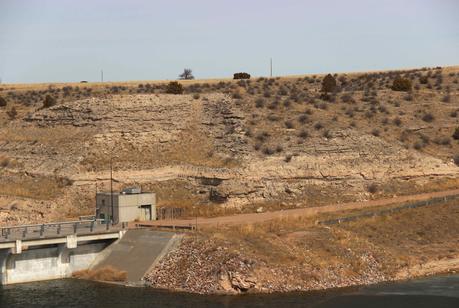
Layers of gray rocks are common around the reservoir, visible here on slope beyond dam.
At the time of McGrew’s work, the Gering was thought to be earliest Miocene. Now it’s usually considered late Oligocene, roughly 25 million years old. The conglomerate is the lithified remains of stream channel deposits.The Gering Formation is well-exposed around the reservoir but ownership is mostly private. Fortunately a small Habitat Management Area lies just off the county road about three miles southwest of the dam (HMAs are public hunting areas created through agreements with landowners). There was no season underway and no one else around, so I parked at the trailhead and walked up Cottonwood Creek.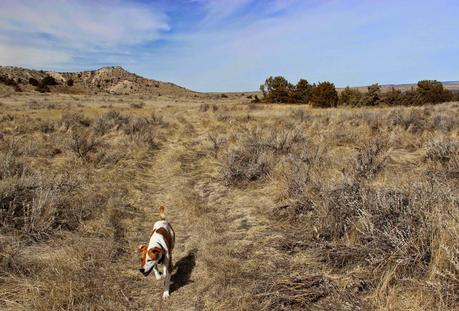
Not far from the trailhead.
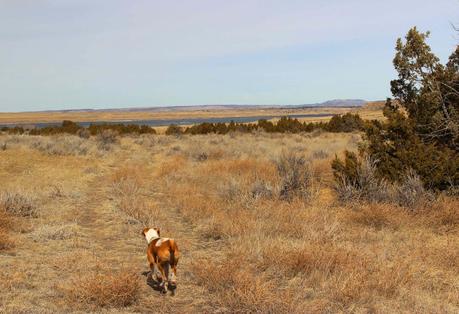
Grassland with sagebrush; Rocky Mountain junipers grow in drainages and on canyon rims.
The creek was just a trickle and there were no cottonwoods, but the country was still beautiful. It was great to stroll through juniper woodland on a spring-like day.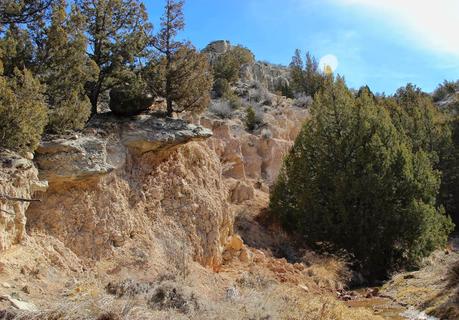
Juniper woodland in Cottonwood Creek drainage.
the unicorn is commonly described as an extremely wild woodland creature
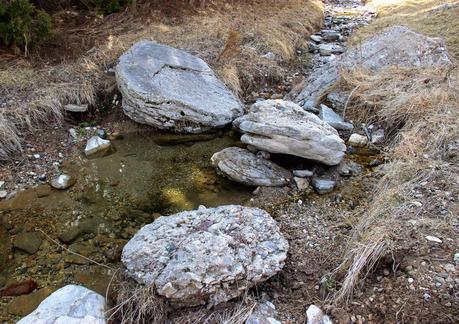 Along the creeklet were boulders that matched the well-cemented (and therefore resistant to erosion) conglomerate described by McGrew:
Along the creeklet were boulders that matched the well-cemented (and therefore resistant to erosion) conglomerate described by McGrew:“conglomerate made up predominantly of unsorted, rounded to sub-rounded fragments of pre-Cambrian granite and quartzite and limestone and dolomite from the Hartville formation. The fragments range in size from pebbles 1 inch or less in diameter to boulders 2 feet or more in diameter imbedded in a gray, fine-grained, limy, well-consolidated quartz matrix.”
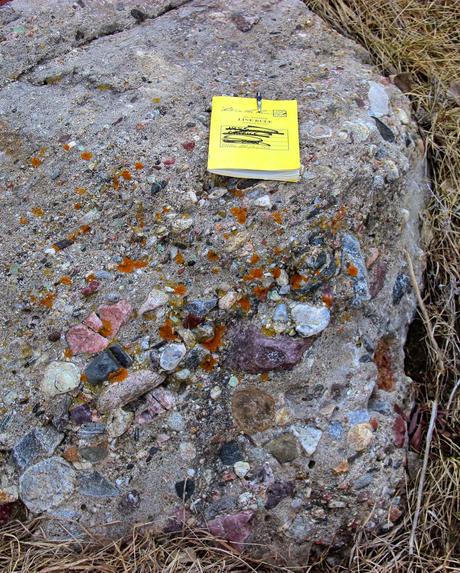
I liked the varied composition of the conglomerate ... made it photogenic.
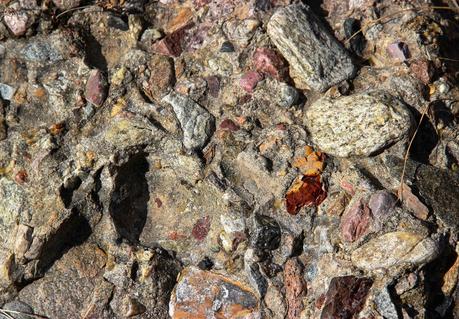
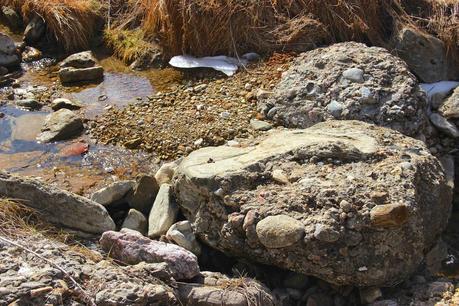
The conglomerate boulders looked like old blocks of concrete ... with super heterogenous aggregate.
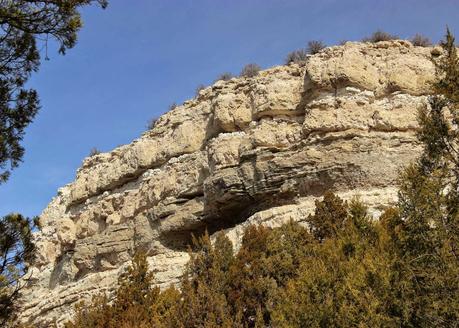
Layer of gray conglomerate in cliff above creek.
The drainage narrowed into a canyon with more boulders and more water. The creek gurgled over rocks and fell into small pools. There were occasional cottonwoods. The trail disappeared, but it was easy enough to keep going upstream.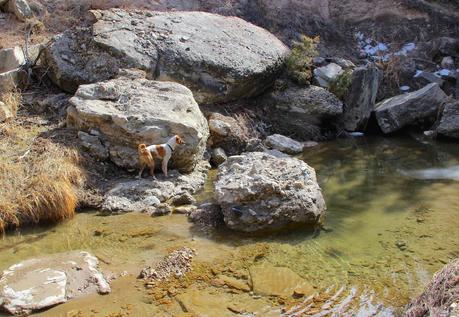
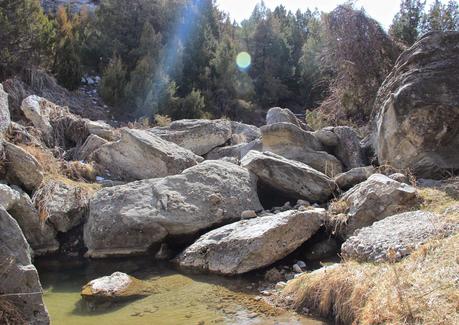 Then conditions began to deteriorate. There were more and bigger boulders, cockleburs, mud, fallen trees, and eventually snow and ice. Was it worth continuing?
Then conditions began to deteriorate. There were more and bigger boulders, cockleburs, mud, fallen trees, and eventually snow and ice. Was it worth continuing?The gentle and pensive maiden has the power to tame the unicorn.
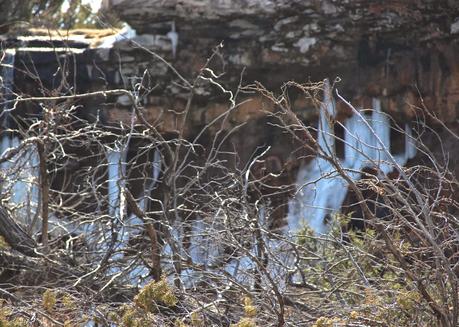 I caught a glimpse of ice on cliffs and realized this was the head of a box canyon. I picked my way through ice and snow to a sitting spot. It seemed like a fairy-tale place: a small waterfall rushed over the cliff, and ice decorated the canyon walls and floor.
I caught a glimpse of ice on cliffs and realized this was the head of a box canyon. I picked my way through ice and snow to a sitting spot. It seemed like a fairy-tale place: a small waterfall rushed over the cliff, and ice decorated the canyon walls and floor.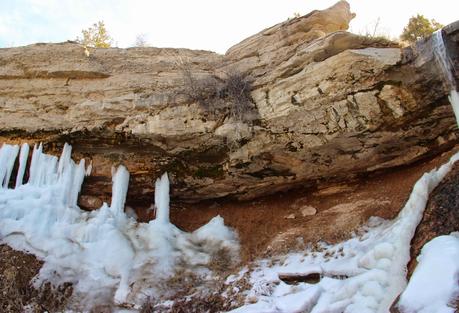
Small waterfall upper right.
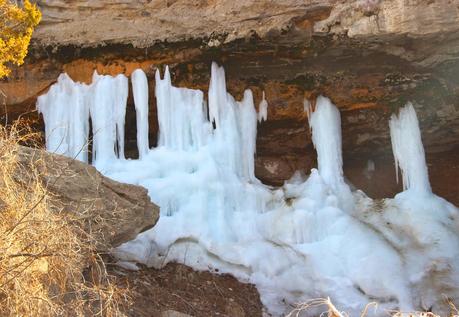
The alcove faced north, so the ice hung on even though it was a spring-like day.
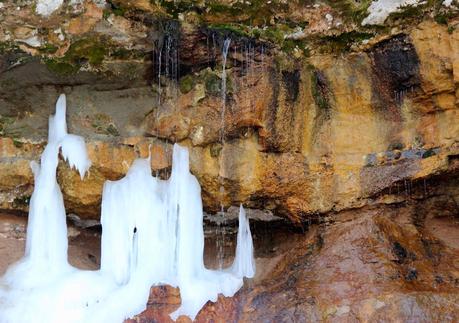
In some places water seeped from the rock to form ice sculptures (note healthy moss).
I shot lots of photos and a movie. That’s when I saw it:An exquisite crystal unicorn rested against the rock wall. It stood perfectly still, blending in with the ice around it.
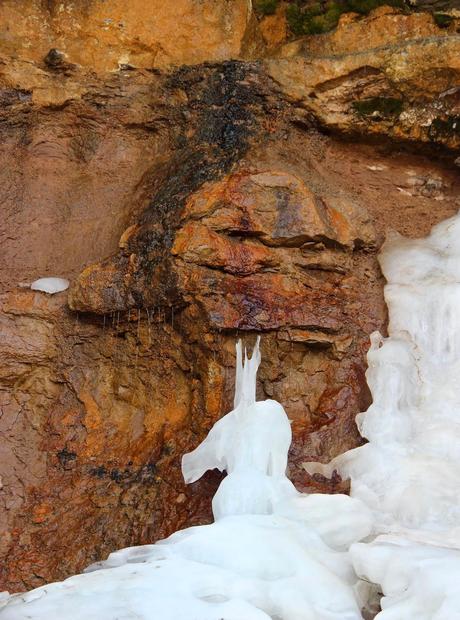
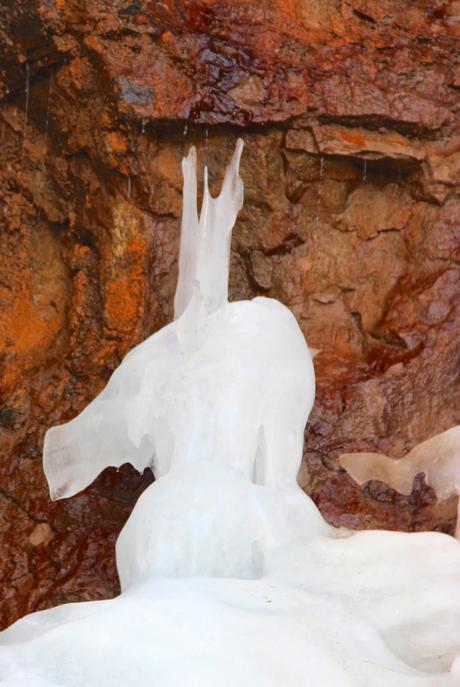 I sat in wonder and admiration, but then remembered:
I sat in wonder and admiration, but then remembered:the unicorn, for the love it bears to fair maidens, forgets its ferocity and wildness; and laying aside all fear it will go up to a seated damsel and go to sleep in her lap.So I got up and left quietly, tip-toeing through the cockleburs, boulders and mud.
Sources
Blackstone, DL. 1996. Structural geology of the Laramie Mountains, southeastern Wyoming and northwestern Colorado. WY State Geological Survey Report of Investigations No. 51. PDF
McGrew, LW. 1953. The geology of the Grayrocks area, Platte and Goshen counties, Wyoming. MA Thesis, Department of Geology, University of Wyoming.
